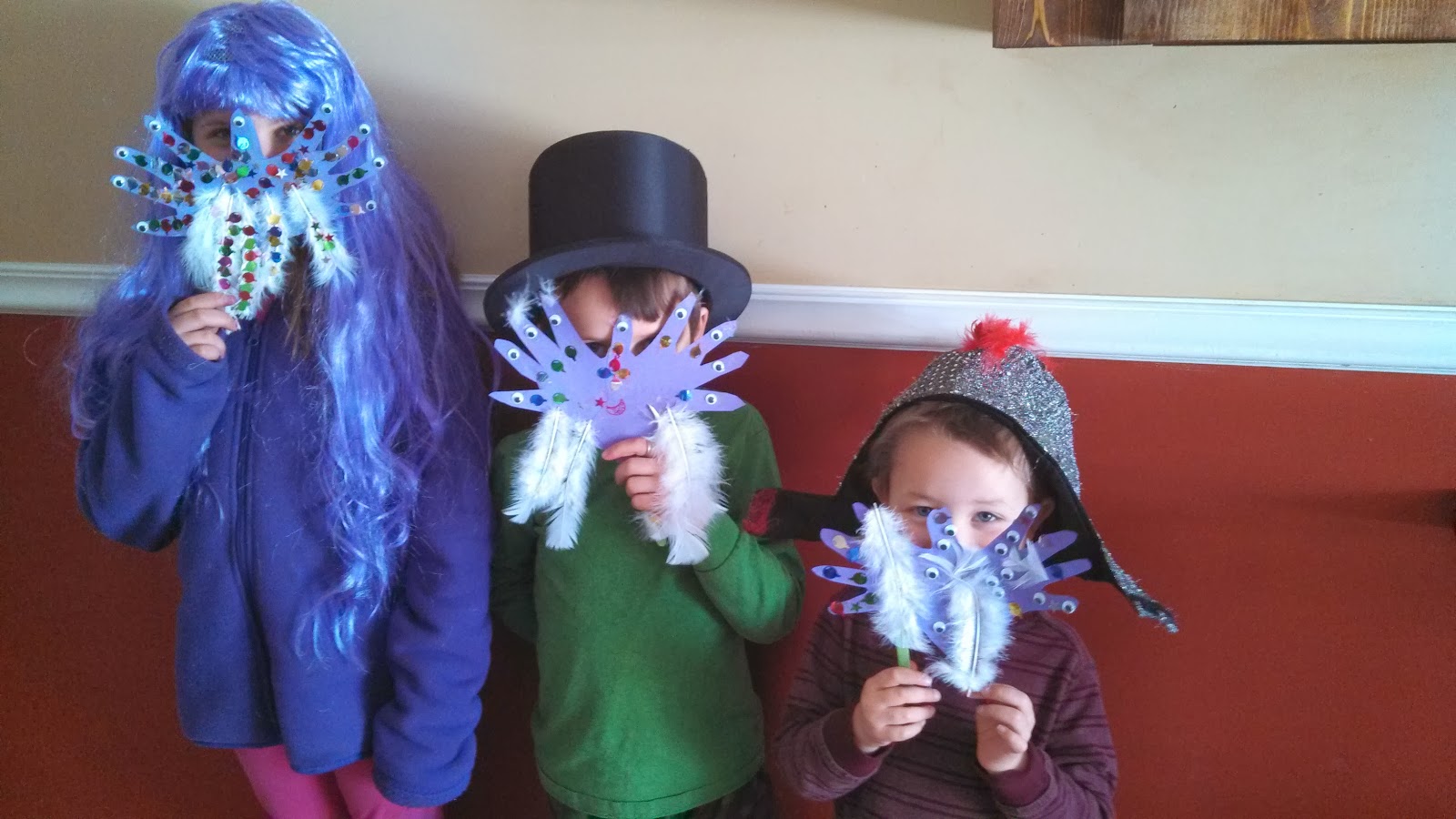You know the season is right for tapping when the weather is at or below freezing at night and above freezing during the day. That change in temperature begins the process of sap flowing up and down the trees. We use a small drill and drill a small hole in the tree to place the spout.
First, it is all about finding the right kind of tree to tap. Of course we want maples but there are different varieties of maples that give different water to sugar content. The ones we tap are Sugar, Red and Silver Maple trees.
 |
| Ya Ya and B are watching dad intently tapping our first tree of the season |
 |
| There are different tapping systems, we use the spigot with blue food safe plastic bags. NOW WE WAIT AND WAIT FOR THE SAP TO DRIP INTO THE BAGS. |
Time to collect and burn. Did you know that it takes at least a minimum of 40 -44 gallons of sap to make at least 1 gallon of maple syrup. There is a very high water to sugar content..The day of boiling the sap has arrived. My most awesome husband builds a small brick oven that we boil on outside. We use long pans to boil the sap as the greater the surface area the faster the burn, ( we learned that the hard way the first time we did this). We chop up old fire wood and fork lift pallets for fire and cover the fire. This helps to keep out the debris.
Of course we have tastes along the way!
Finally, all day has passed and we take the final product into the house to finish off. This is where it gets tricky. At all times you MUST watch the sap when finishing. It will go from sap to boiling over onto the stove and turning into burnt sugar in a matter of a second. Ask me how I know this! I have made a few mistakes along the way and have ruined a batch of syrup after boiling all day. My most darling husband was not in the least bit happy with me to say the least. But with homesteading, you live and learn! And this was a true marriage, character building moment.
 |
| finishing off our final batch. |
 |
| The finished product. Started at 9 a.m. finished at 2 a.m. the next morning. Guess what we had for breakfast? PANCAKES AND MAPLE SYRUP. |


















